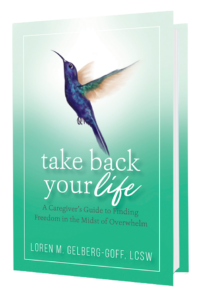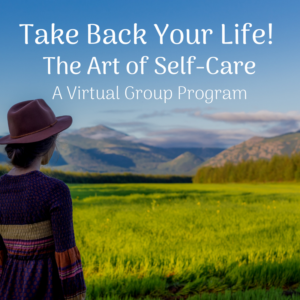It’s hard to find anyone these days who wouldn’t agree that we are currently experiencing some chaotic times – all one has to do is turn on the television, read the front page of a newspaper or open an internet browser, and it’s instantly obvious. I recently told someone that I believe “we are being bombarded with more stuff, and faster, than our hearts can process.” So if you are feeling a little disoriented and shell-shocked as you attempt to go about your normal life, know that there is good reason for feeling that way, and you are not alone!
To assist you in keeping yourself centered and sane in these shifting sands, I thought I’d focus today on an underlying theme in the strategies I help caregivers learn and put into use, to make their lives both more manageable and enjoyable. The theme is the importance of holding a desired outcome of being both resourceful and resilient, and knowing that achieving an effective combination of these requires both the head and the heart.
What’s fascinating is how our head – or more specifically, our brain and its left and right hemispheres – plays a vital role in helping us take good care of our heart.
Being resourceful means finding new options where you were sure there weren’t any, whether for managing time and tasks, honoring commitments important to you, or providing yourself with much-needed self-care. That search for solutions that resolve particular problems is largely what we often refer to as a “left-brain” function, since the left brain controls our language and logical thinking. It’s the part of the brain we engage when doing mathematical equations and deductive reasoning. It’s the “devil’s in the details” part of the brain.
In contrast, the right brain is in charge of activities such as creativity, facial recognition and spatial relationships. It adds the benefits of the “big picture,” or “30,000 foot view,” of whatever information we’re processing. It adds intuition, and a subconscious awareness of the subtle connections between things, to the “figuring it out” process. This guides us to the best answer out of all the possible choices, by letting us know when something “just feels right” to us. It also lets us know when we’re getting emotionally and/or spiritually depleted because we’re not replenishing our reserves or energy and wellbeing as we give of ourselves to the loved ones we are caring for.
So when it comes to being resilient, the right brain is our ally in letting us know whether we have the inner strength to deal with a particular challenge, or need more replenishment or outside support in order to both cope as we go through the challenge, and “bounce back” to our healthy, positive, optimistic selves afterward.
Given that the importance of resilience in particular has been on my mind in the last several weeks, I was greatly moved and inspired to read a piece called “Where’s the Safety Net?” written by a valued colleague of mine, Linda Graham, on her blog. Linda specializes in the subject of resilience (Linda has written a book about it called Bouncing Back), and her words could not be more timely in this very challenging period that we are all going through together. (Linda Graham, Resources for Recovering Resilience~ lindagraham-mft.net)
Given that my focus is on caregivers, I have to say that learning how to become and stay resilient is possibly the most important skill a caregiver can master.
I highly encourage you to read her post here, in hopes that you will find it as restorative and uplifting as I did!




Recent Comments